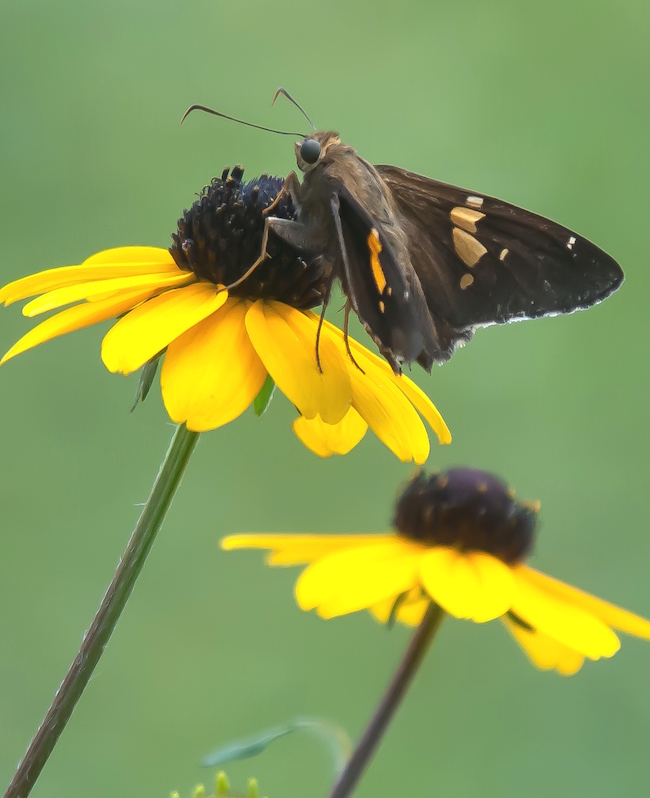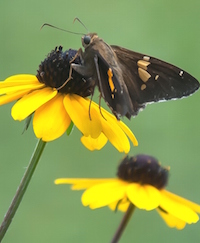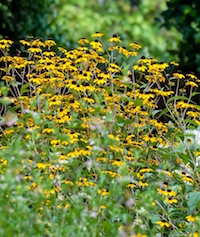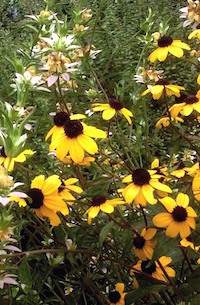It’s been 20 years since the Georgia Gold Medal program gave its prestigious award to one of the most persevering native perennials of all time, the Rudbeckia triloba.
At the time, finding one at the local garden center was quite rare, even though it is native in 34 states. If you think about it, it is also really quite remarkable that a plant with no dazzling name other than the "three-lobed rudbeckia" or "brown-eyed Susan" staked a place not only in fame, but also in the marketplace.
Rudbeckias were made popular ‘Indian Summer,’ a 1995 All-American-Selections-winning Rudbeckia hirta, and ‘Goldsturm,’ a Rudbeckia fulgida var. sullivantii named 1999 Perennial Plant of the Year. Today we are still buying all of them, including the native brown-eyed Susan, the 1997 Georgia Gold Medal winner.
I recall taking my family to Callaway Gardens in Pine Mountain, Georgia, every year, and this rudbeckia’s reflections could be seen across lakes in bold sweeps with Joe Pye weed and the swamp hibiscus. In Callaway’s wildflower garden, there was the same, absolutely dazzling color, along with a swarm of pollinators.
At the Coastal Georgia Botanical Garden at the Historic Bamboo Farm, ours are also showing out and are shoulder-high in most locations. They are partnered with salvias, old-fashioned summer phlox and the native spotted monarda, all in a cloud of pollinators that, other than the butterflies, I struggle to identify.
Geographically speaking, the Rudbeckia triloba is native to most of the country. It can be grown in many different soils and is cold hardy from zones 4 through 9 or from Texas to Minnesota and most states east. This is why some of us consider this “America’s plant.”
The coned-flowers with a dark brown center have petals of yellow-orange and grow in abundance from late summer into fall. Some references suggest that the plant is biennial or a short-lived perennial; others believe it’s a perennial that reseeds too. One thing is for sure — if you plant the Rudbeckia triloba, you will have it around for a long time.
If you are plagued by tight, compacted clay that doesn’t drain well, amend it with 4 inches of compost or organic matter and till in 6 to 8 inches. While tilling, take advantage of the opportunity to incorporate 2 pounds of a slow-release, balanced 8-8-8 or 12-6-6 per 100 square feet of planting area.
Choose a location that gets plenty of sun for the best blooming. Space your plants 24 to 36 inches apart and plant them at the same depth they are growing in the container. You certainly can plant by seed, and they will bloom the first year. Fall is also a great time to plant, giving you a jump start come spring.
If you have dreamed of a wildflower garden, let this be your starter plant. Plant an odd-numbered cluster of three or more with blue salvias, anise hyssops or agastache, Joe Pye weeds, native iron weeds, spotted beebalm and purple coneflowers. You’ll soon be walking a path of rare beauty partnered with the sounds of pollinators moving all around.
Follow me on Twitter @CGBGgardenguru. Learn more about the CGBG at www.coastalGeorgiabg.org.










